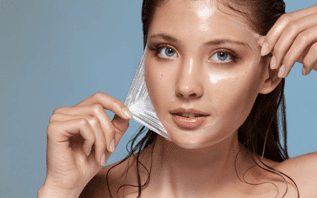Myth #4 If you don’t feel it, it’s not working
Everyone’s skin is different, some will feel a lot of activity when the solution is applied while others will feel nothing. Sensation is not an indicator of the product working but rather how your skin uniquely responds to the peel solution. The amount of visible skin shedding also differs from treatment to treatment. Sometimes peeling will not be visible to the naked eye but cell turn over is still occurring. Depending on factors such as the amount of dead skin, skin thickness or acid type peeling can look like light peeling after a sunburn or like a pencil eraser.

Myth #5 One peel will fix all my skin’s problems
While you will notice your skin looks brighter and more hydrated immediately after a peel, to receive the best results it is suggested that you come in for regular peels spaced 2-4 weeks apart. Peels are amazing for correcting texture, scarring, acne, and hyperpigmentation but they are not a one and done treatment. It took time for your skin to develop these conditions, it will take time to correct them as well. Using the right products for your skin at home will accelerate the benefits of your professional treatments.
Myth #6 People with dark skin can’t get peels
Those with dark skin can absolutely benefit from the brightening, healing and anti-aging benefits of chemical peels, however, there are more precautions taken with darker skin types because of the possibility of worsening hyperpigmentation or creating areas of hypopigmentation. With dark skin it is imperative that the skin is prepped for weeks before the treatment, conditioning the skin with professional products at home increases the opportunity for great results. As with every chemical peel service, a good esthetician closely monitors activity level, redness and other signs of irritation during the treatment. The only time when chemical peels would not be recommended for those with dark skin is if they have a history of keloid scarring. As a chemical peel is creating a controlled wound to stimulate cell renewal there is an increased risk of keloid scarring in those who are prone to raised scars.
